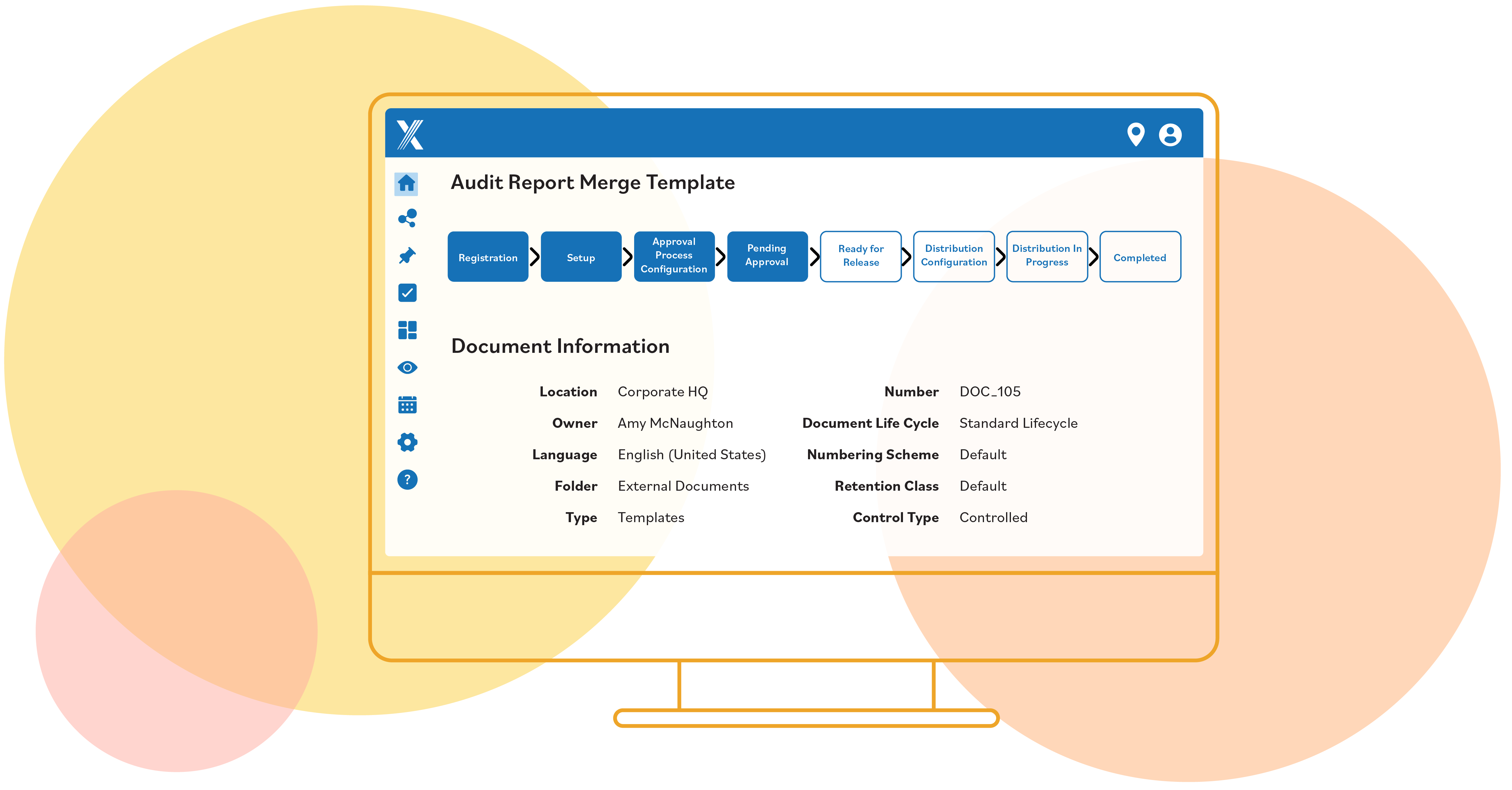Enhanced Compliance: OSHA’s 2024 Updates to 300 and 301 Forms for Accurate Safety Reporting
August 22, 2023

The Occupational Safety and Health Administration (OSHA) has amended the regulation 29 CFR part 1904 for occupational injury and illness record keeping. Under the amended regulation, organizations in certain industries with more than 100 employees must now electronically submit Form 300-Log of Work-Related Injuries and Illnesses and Form 301-Injury and Illness Incident Reporting once a year. This rule becomes effective on January 1, 2024.
Organizations will also be required to submit the company name when submitting Form 300 and Form 301 data. OSHA intends to publish some of the data on its public website, as it believes the information will promote informed decision making for employers, workers and customers relating to the organization’s safety record. OSHA believes this approach will provide incentive for organizations to increase their efforts to reduce injuries and illnesses. It is important to note that OSHA will not post information that could reasonably identify individuals involved in incidents or any of their personal information. OSHA will not collect names or addresses of employees, health care practitioners or medical facilities where treatment was provided away from the worksite.
Industries that are now expected to submit annual reports were selected based on their high DART rates or high fatality rates and are listed in Appendix B. The industries added to Appendix B are as follows:
- 1133 – Logging
- 1142 – Hunting and Trapping
- 3379 – Other Furniture Related Product Manufacturing
- 4239 – Miscellaneous Durable Goods Merchant Wholesalers
- 4853 – Taxi and Limousine Service
- 4889 – Other Support Activities for Transportation.
The complete list of industries included in Appendix B can be found here.

This rule does not amend existing obligations for organizations with 20-249 employees in certain industries that electronically submit the OSHA Form 300A annual summary or for organizations with 250 or more employees that are required to keep injury and illness records and submit Form 300A annually.
An Overview of the OSHA Recordkeeping Rule
Many organizations in the United States are required to document workplace injuries and illnesses under OSHA’s Recordkeeping Rule. The Occupational Safety and Health Act of 1970 (OSH Act) directs employers who are subject to the rule to prepare and maintain an annual record of occupational injuries and illnesses for reporting on March 2. Employers with 10 or fewer workers during the previous calendar year generally do not need to report unless directed to do so by OSHA or the U.S. Department of Labor.
Organizations in certain low-hazard industries can be exempt from reporting, including retail trade, finance, insurance, real estate and services industries.
OSHA recordkeeping requirements consist of three forms first introduced in 2002:
- OSHA 300
- OSHA 300a
- OSHA 301
OSHA 300 is an official log that details every injury or illness that occurs in a workplace. It includes three major sections:
- Identifying the injury/illness (name, case number, job title)
- Describing the injury (date of injury, where it occurred, description of injury/illness)
- Classifying the injury using the checkboxes (what was the result of the injury—e.g., missed work, hospitalization—and the general type of injury/illness).
Recording an illness or injury in a Form 300 requires filling out Form 301 at the same time. Form 301 is the Injury and Illness Incident Report for each event. It provides additional space to describe the incident in detail, telling the story of what happened, why it happened and what the effects were for the employee.
Data collected and reported by employers must be uniform and accurate, assuring statistical data consistency and validity. OSHA uses the recorded data for several purposes, including inspection targeting, performance measurement under the Government Performance and Results Act (GPRA), standards development, resource allocation, Voluntary Protection Program (VPP) eligibility and low-hazard industry exemptions. Recordkeeping data is also used in the analysis of health and safety environments at an employer’s establishment. It is also the information source for the OSHA Data Initiative (ODD) and the Bureau of Labor Statistics’ (BLS) annual survey.
A completed Form 300a, required at the end of the year, tallies the impact of injuries and illnesses but does not include personal information. Form 300 is used to complete Form 300a by identifying the following:
- Total number of deaths
- Total number of cases with days away from work
- Total number of cases with job transfer or restriction
- Total number of other recordable cases
- Total number of days away from work
- Total number of days of job transfer or restriction
- Total number of injuries, skin disorders, respiratory conditions, poisonings, hearing loss or other illnesses
In the case of a fatal or serious workplace injury—defined as an amputation, hospitalization or loss of an eye—employers, including those otherwise exempt from OSHA recordkeeping, are required to notify OSHA. A fatality must be reported within eight hours and an in-patient hospitalization, amputation or eye loss must be reported within 24 hours.
Forms must be kept on file for five years following the year to which they pertain. It is also necessary to update the Form 300 with any changes to the recorded cases during that period. Forms should be made available to employees, former employees, their representatives and to OSHA officials upon request. Note that both the Form 300 and Form 301 incident reports will include information relating to employee health and therefore can only be used in a way that protects confidentiality to the extent possible while promoting occupational safety and health.

Why Underreporting Workplace Incidents Continues to be a Problem
In a 2018 report submitted to the United States Congress by the Office of the Inspector General for the Department of Labor, Inspector General Scott S. Dahl observed that, “OSHA did not have the controls in place to ensure that it had complete information on the number of work-related fatalities and severe injuries.” In fact, during the course of review, OSHA’s former Assistant Secretary estimated that perhaps 50 percent or more of severe injuries had gone unreported.
It is important for safety leaders to examine each individual case and to go through a decision analysis to determine whether an incident should be recorded, as well as to ensure the right information for a recordable incident is collected. This can be a challenging task, and it needs to be done by people with expertise in this area. Some companies put this responsibility onto workplace supervisors who might not understand the requirements of recordability statutes. These supervisors are often handed an incident form to fill in and given vague instructions about what should be reported and why—direction that would then require whoever fills out the form to interpret meaning. Software like Intelex’s Safety Incident Management application gives supervisors the ability to report the incident and to send it to EHS leadership to determine whether or not the incident is recordable.
Incidents that go unreported can have a significant impact on the safety culture of the organization and present a missed opportunity to learn and to improve safety for frontline workers. Workers might begin to believe that management isn’t prioritizing their safety, which can degrade the overall culture of the organization. There are three major reasons why incidents go unreported.

The first reason is the safety culture. There might be an explicit or implicit suppression of incident reporting. This is often the result not of malice but of good intentions gone astray. With safety goals and performance indicators reliant on the number of incidents, recordables, days away and other safety factors, leadership can often favor suppressing the true incident rate instead of breaking the streak of days without a recordable incident.
Second, workers might not have a convenient way to report incidents from the frontline. When frontline workers are busy, an easy way to report incidents, near misses or hazards is critical for getting the right safety data. If there is no easy way to submit the report, it’s unlikely to happen. Technology can help to make the process of entering incident information simpler and can ensure the right person gets what they need via workflow automation. It also eliminates the need for workers to figure out to whom that information should be passed.
Finally, employees need training to know how to fill out and submit reports. They also need to know how to recognize which events or incidents must be logged and reported. Further, they need to understand the importance of being diligent and dutiful in reporting. Without this context, employees might not see the value in doing it, which can discourage submitting the report.
How Digital Technology Contributes to Better Incident Reporting
Recording, understanding and mitigating incidents are foundational attributes of the Intelex Solution. To support this work, OSHA regulatory reporting is part of our Occupational Injury and Illness Reporting Software, and is offered to assist in electronically reporting incidents deemed OSHA recordable for OSHA Form 300 and 301. Our platform applications auto-populate regulatory forms from data captured in our Incident Management Application, saving the user time and more importantly, virtually eliminating filing mistakes. The Intelex Occupational Injury and Illness Reporting application also allows an enterprise view of the information, putting the approval and submission requirements in the hands of those ultimately responsible. Intelex is a trusted partner in helping clients use data to prevent future injuries and illness and to maintain a compliance advantage.






